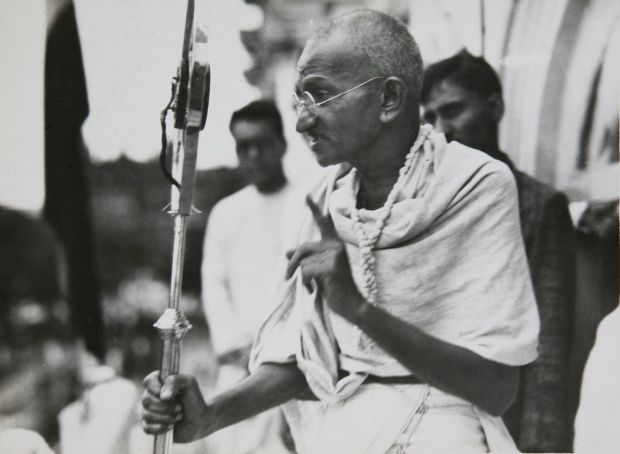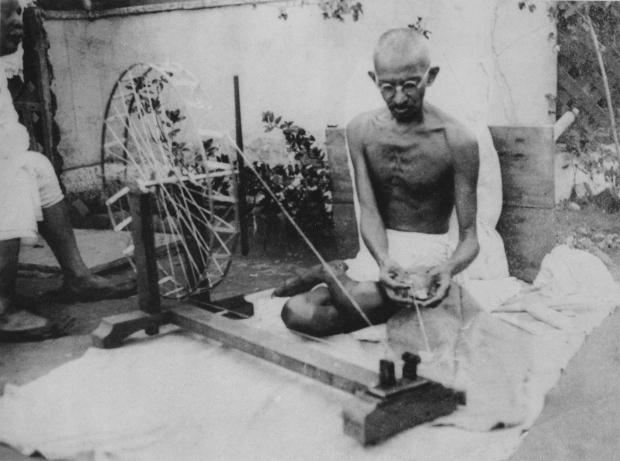If reading this by email, please tap the title at the top to open your browser for the best experience. Then, clicking individual pictures will reveal higher resolution images.
Mahatma Gandhi remains one of the most revered and idolized figures in modern history. And yet, also, one of the least imitated. His life and thought provide a compelling example that may not be well understood. Asked about this, he might have said, “It’s all rather simple,” and summarize his life’s work with a Kantian principle derived from Jesus: treat one another as you would have them treat you.
“Simple” is sometimes another word for “naive.” In Gandhi’s case, it is otherwise. His journey through life, well-depicted in Richard Attenborough’s fine film, taught Gandhi many things and led him to a wise integrity few others seem to have attained. He learned much through arduous experiences. Gandhi’s uniqueness may lie in how he synthesized his learning with the result that he achieved greater maturity and a resoluteness of character. His personal growth involved a practiced disposition toward honesty, reasoned adherence to principles, and a profound simplicity of manner in life choices.
Gandhi in conversation with his friend, and India’s first Prime Minister, Jawaharlal Nehru
For many, Gandhi’s life story brings to mind the word ‘pacifism.’ More nuanced is the label, ‘non-violence.’ Yet both terms need further qualification. Pacifism and a non-violent response to aggression often reflect a belief that violence (and therefore war) is not governed by reason, and therefore cannot be disciplined or limited by principled reflection and deliberation. Hence, according to this view, no matter how destructive violence may be, responding in kind – even if proportionately – always compounds the evil.
Gandhi’s approach to the evil he apprehended and experienced was indeed reasoned and principled. It was shaped around a resolve that active, non-violent resistance must be distinguished from passive non-resistance, precisely because the former can provide a compelling witness to reasoned propositions. In this sense, Gandhi’s non-violent resistance serves as an active approach in antithesis to a passive, non-violent, approach of non-resistance.
Gandhi – demonstrating active resistance – deliberately harvesting salt in violation of British dominion law
James Douglass’ book, Gandhi and the Unspeakable, helps us understand Gandhi’s adherence to the concept of satyagraha, or truth-force. For Gandhi, this principle nullifies the pursuit of social and political ends through violence. Identified by Thomas Merton in an essay on Gandhi, satyagraha is conceived of as a universal, rather than individual, feature of what it means to be human, articulated in the words, “truth is the inner law of our being.”
This truth-force is manifest in substantive rather than sentimental love. It can be discerned and honored within oneself, while it can – and must be – discerned and honored within others, especially as one confronts evil in human relations. Because this is so, one who seeks to enact this principle can honor all others with trust. Even – counterintuitively – to honor one’s opponents and sworn enemies, because one’s trust becomes anchored in our shared humanity rather than in a calculation of the probable harm that may result from engagement with those others.
Giving primacy to this principle provides the courage to believe that we can die to all that puts us against one another, and therefore the courage to face the death that others may plan for us. Merton and Douglass find this truth-force embodied in the person of Jesus, and with Gandhi, see it as a powerful example of what can profoundly transform human social and political relations. As Douglass explains, Gandhi knew his assassins, and even invited the man who eventually killed him to live with him following that same man’s earlier attempt on Gandhi’s life.
Perceptive hearers of this past Sunday’s Gospel reading from John might wonder what Gandhi would make of Jesus’ actions in the Temple. John tells us that Jesus made “a whip of cords” and drove out those selling animals, or exchanging Roman coins for money acceptable as offerings in Israel’s house of worship. The ambiguity of John’s account makes clear that Jesus at least threatened violence even if he did not resort to it. For his whip was directed not simply to scattering the animals of those selling them, but also against the money changers. Readers may note that some actions of Jesus in the Gospels may have been intended less to model ethical conduct for his followers, and instead to give evidence of his providential and messianic role in history. Much may be inferred from this brief “Temple-cleansing” story.
Given how our culture encourages us to see life in an either/or way, we may be surprised to discern how much the Hindu Gandhi seems to have learned from reading the Gospels. We may also be surprised by how Gandhi’s beautifully lived example – regardless of his personal strengths or failings – may help us discern what the Gospels have yet to teach us.
The reference to the Gospel reading is from John 2:13-22, which helpfully can be compared to its Gospel parallels. James Douglass, with his personal history as a religious scholar of spiritual approaches to questions related to conflict, violence and war-making, brings an informed and insightful perspective to the study of Gandhi, as he did earlier to the wide-ranging circumstances leading to the deaths of Martin Luther King, Jr., Malcom X, and John F. Kennedy.
Note: blog settings have been changed to provide more opportunity to offer comments, using the link below.




